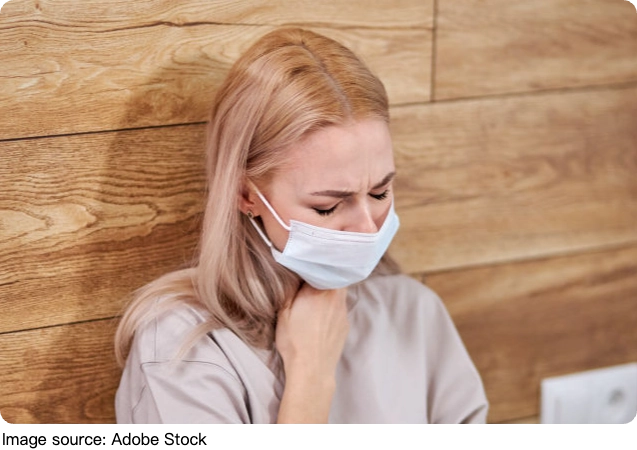Mold: Affects Breathing?

Mold, a type of fungus found in both indoor and outdoor environments, poses significant concerns for respiratory health.
Exposure to mold spores can trigger a range of respiratory symptoms, from mild irritation to severe allergic reactions and infections.
The Respiratory Impact of Mold Exposure
When mold spores are inhaled, they can irritate the respiratory tract lining, leading to inflammation and compromised lung function. For many people, exposure results in symptoms comparable to seasonal allergies, including sneezing, nasal congestion, and itchy or watery eyes. However, in sensitive individuals, these effects can escalate into more pronounced respiratory difficulties.
Mold allergy symptoms often mimic those seen in hay fever (allergic rhinitis), characterized by a runny or stuffy nose, coughing, postnasal drip, and frequent sneezing. These allergic reactions stem from the immune system's heightened sensitivity to mold spores, which are perceived as harmful invaders, despite their ubiquitous presence.
In individuals with asthma, mold exposure can exacerbate symptoms, precipitating wheezing, chest tightness, persistent coughing, and shortness of breath. This phenomenon is termed allergic asthma. Mold acts as a trigger causing airway inflammation and bronchoconstriction, which obstruct airflow and hinder adequate oxygenation.
People who suffer from asthma should be particularly cautious in environments with high mold concentrations to prevent severe asthma attacks.
Allergic Bronchopulmonary Aspergillosis and Hypersensitivity Pneumonitis
Some molds, notably those from the Aspergillus genus, can provoke more serious immune-mediated lung conditions. Allergic bronchopulmonary aspergillosis (ABPA) is a hypersensitivity reaction that occurs when the immune system intensely reacts to Aspergillus spores colonizing the airways.
ABPA primarily affects patients with asthma or cystic fibrosis and manifests as severe wheezing, coughing with mucus production, fever, and worsening lung function. If left untreated, ABPA can cause progressive lung damage and fibrosis.
Another severe condition linked to mold inhalation is hypersensitivity pneumonitis (HP), an immune-mediated lung inflammation triggered by repeated exposure to airborne mold spores or other organic particles. HP manifests with symptoms such as coughing, shortness of breath, fatigue, and even flu-like symptoms. Chronic exposure can lead to irreversible lung fibrosis.
Mold-Associated Infections: Aspergillosis and Other Mycoses
While allergic reactions represent the predominant mold-related respiratory issues, mold can also cause infections in susceptible populations. Immunocompromised individuals such as those undergoing chemotherapy, transplant recipients, or patients with chronic lung diseases—are at increased risk of invasive mold infections.
Aspergillosis, caused by inhalation of Aspergillus spores, ranges from allergic reactions to severe invasive disease that damages lung tissue and may disseminate to other organs. Symptoms include cough, fever, chest pain, and hemoptysis (coughing up blood). Early diagnosis and antifungal therapy are vital to improve outcomes in these cases.
Other molds can also cause respiratory infections, though less commonly than Aspergillus. These infections require medical intervention and pose considerable health risks, especially in vulnerable patients.

Chronic Exposure and Inflammatory Responses
Not all mold-related respiratory issues are linked to infection or allergy. Persistent exposure to mold in damp indoor environments can lead to chronic inflammation in the lungs, resulting in symptoms such as persistent cough, wheezing, and a feeling of chest tightness.
Scientific research has identified that mold-derived components, including mycotoxins and microbial volatile organic compounds (mVOCs), can activate inflammatory pathways, exacerbating respiratory symptoms.
Preventive Measures and Treatment
Prevention remains the cornerstone of managing mold-related respiratory effects. Maintaining dry indoor environments, promptly repairing water leaks, ensuring proper ventilation, and removing visible mold growth can significantly reduce exposure risks. For symptomatic relief and management, antihistamines, nasal corticosteroids, and bronchodilators may be employed to control mold allergy symptoms and asthma exacerbations.
Dr. Stephen Redd, M.D., expertise lies in emergency response, infectious disease control, and public health strategy. He states "Fungi and molds are known to cause several specific diseases."
Mold significantly affects breathing by triggering allergic reactions, exacerbating asthma, inducing immune-mediated lung conditions, and causing infections in susceptible individuals. Its impact ranges from mild nasal irritation to life-threatening pulmonary diseases depending on the exposure level, mold species, and individual susceptibility.
Recognition of symptoms, preventive strategies to minimize mold exposure, and appropriate medical treatment are essential to safeguarding respiratory health. Ongoing research continues to unravel the complex interplay between mold and the respiratory immune system, promising advances in diagnosis and therapy for those affected by mold-related respiratory conditions.


